The Committee for Economic Development of Australia (CEDA) argues in a new report that the nation’s pool of skilled migrants is being underutilised.
CEDA’s senior economist, Andrew Barker, says recent migrants earn significantly less than Australian-born workers, and many are in jobs that are beneath their skill level.
“Recent migrants earn significantly less than Australian-born workers, and this has worsened over time”, Barker said.
“Weaker English skills and lack of skills recognition are preventing us from making the most of migrants’ skills and experience, with discrimination likely also having an impact”.
“Many still work in jobs beneath their skill level, despite often having been selected precisely for the experience and knowledge they bring”.
The report shows that migrants who have been in Australia for two to six years earn more than 10% less than Australian-born workers on average.
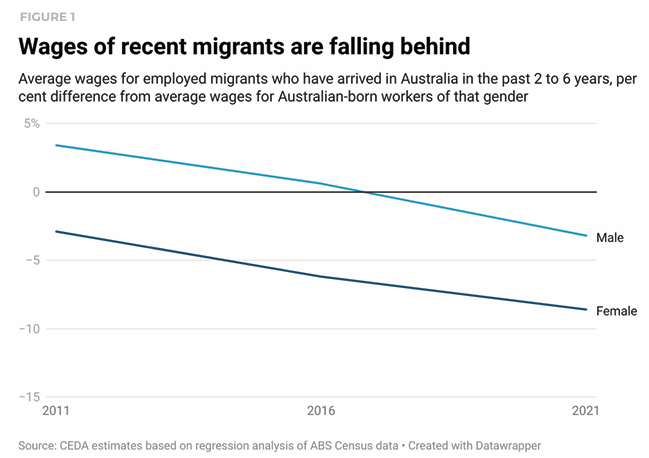
It also suggests the migration system could be dragging down Australia’s productivity.
“Labour productivity and wages are closely linked, indicating that migrant labour is not being used as productively as it could be”, the report says.
“This decade, migrants have become increasingly likely to work in lower productivity firms”.
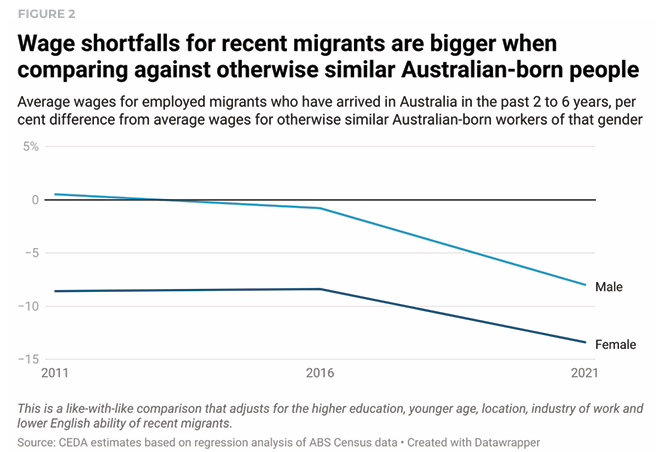
The report also shows that unemployment rates of recent skilled migrants are higher than Australian born workers:
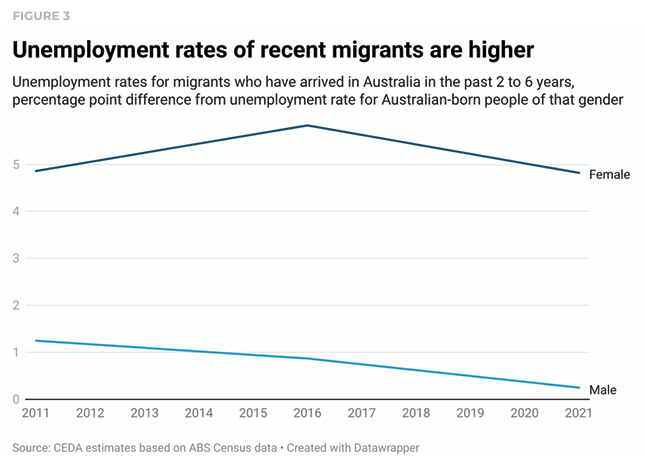
Hilariously, higher educated migrants have the largest shortfall in earnings from Australian workers:
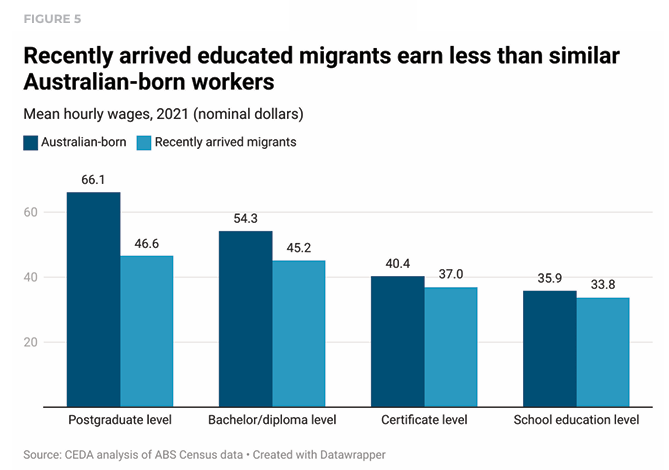
Migrants are also far less likely to work in professional or managerial jobs:

The report notes that “English-language proficiency remains a significant factor explaining lower wages for recent migrants” as well as “for employment rates, labour-force participation rates, and hours worked”.
However, Australia’s migration system has shifted to non-English speaking nations, which has helped drive the poor employment outcomes:
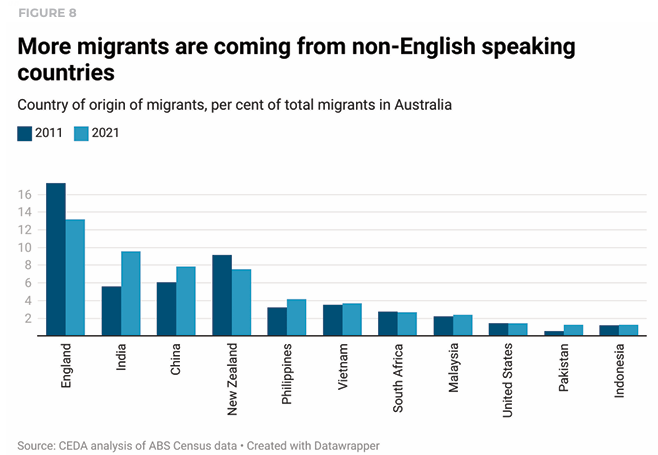
CEDA contends that providing migrants with more English-language courses and making it easier for their overseas qualifications and experience to be recognised would help to address the skilled labour shortage.
The poor migrant wage outcomes outlined by CEDA above are supported by the latest Graduate Outcomes Survey (GOS), which shows that international graduate employment rates, participation rates, and median salaries are well below those of domestic graduates:
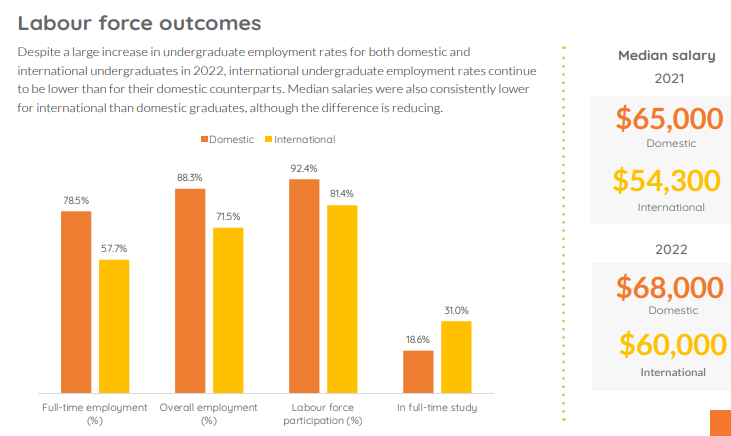
Source: Graduate Outcomes Survey (2022)
Disturbingly, Australia’s three largest source nations for international students – China, India and Nepal – each have poor labour market outcomes as measured by full-time employment:
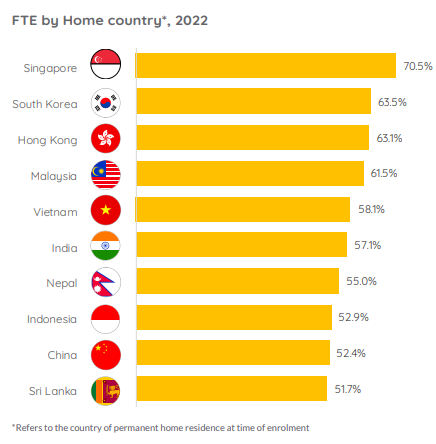
Source: Graduate Outcomes Survey (2022)
All of this proves, yet again, that Australia’s purported ‘skilled’ visa system is a giant sham designed with one goal in mind: the development of a full-blown migrant underclass for chosen sectors to exploit.
Meanwhile, Australian housing and infrastructure continue to be crush-loaded by the migrant flood, forcing Australians into severe rental stress, group housing, or homelessness.
Before importing more migrant workers to solve purported ‘skills shortages’ and ‘skills mismatches’, migrants that are already here should be used more effectively.
Stop the rot and stop wrecking Australia’s productivity and living standards.

